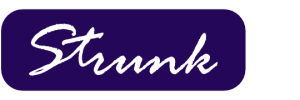Strunk at the Western Bankers Lenders & Chief Credit Officers Conference 2022
This week the Western Bankers Association hosted its annual Lenders & Chief Credit Officers Conference. Strunk was excited to attend and to present Quilo, a digital installment loan solution directed at consumers.
The three day event was hosted at The Ritz-Carlton, Laguna Niguel and was packed full of content for bankers. The agenda included sessions on “Growing Your Small Business Lending Program”, “Innovating through Digital Transformation”, “Loan Growth Through Technology and Automation” and a Legislative Update from Ken Gould, EVP with the California Bankers Association.
Strunk’s CEO, Dan Roderick, was pleased to present and demo Quilo during the Digital Consumer Lending session. Quilo is a fully turn-key FinTech consumer installment loan program that will allow your bank to compete in the world of digital lending. Quilo includes the ability to direct deposit funds to your account holders’ checking accounts for quick and easy access to funds.
Technology has changed the market for installment loans and Quilo can put community banks on the path to high loan growth and increased profitability. Quilo is a game changer. Utilizing the latest in technology, Quilo creates the opportunity to insert community banks in the middle of this quickly growing segment.
Bankers were enthusiastic about the solution and we look forward to continued conversations with many of the conference attendees. If your bank is interested in growing your loan portfolio and improving your margin, let us show you how Quilo can make that happen.


